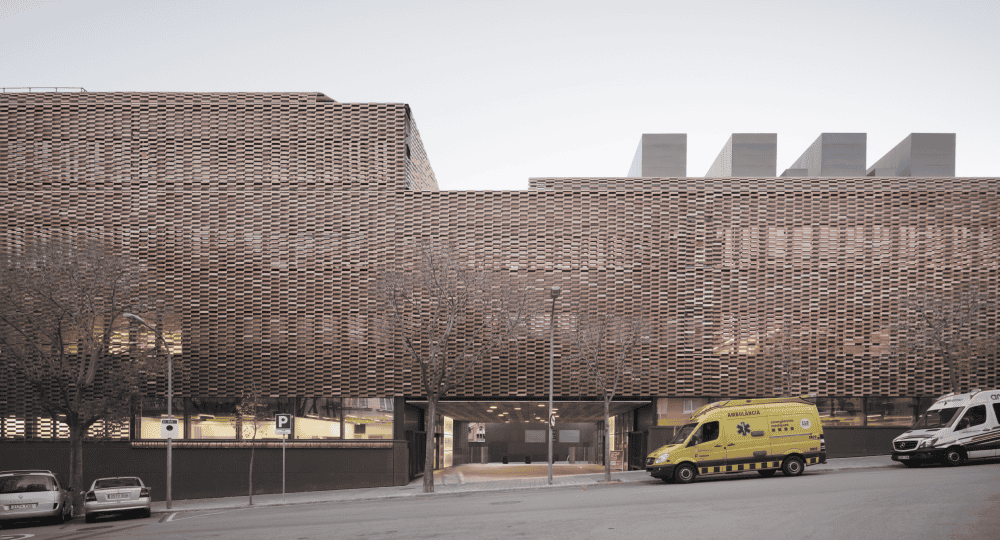
[Image above] A Flexbrick façade covers the Sant Pau Research Institute in Barcelona, Spain. Image credit: Flexbrick
By Isabel Swafford
Earth’s average surface temperature in 2023 was the warmest on record, and there is a high likelihood that record will be broken again in 2024. Sustainable processes are needed now, more than ever, to help combat this worrisome trend.
In architecture and construction, improving the energy efficiency of buildings is a focus for sustainability efforts. Solar control, or the practice of reducing the amount of solar radiation absorbed by the structure, is one way to accomplish this goal.
Previous CTTs discussed how ceramic and glass coatings and paints can be used to reflect solar radiation and achieve passive cooling. But applying this solution can be time intensive. Instead, a novel ceramic façade called Flexbrick offers a faster way to reduce warming.
Flexbrick is based on an idea from Vicente Sarrablo, architect and director of the Barcelona Ceramics Chair at the Universitat Internacional de Catalunya, and developed jointly by Spanish construction companies Piera Ecocerámica and Cerámica Malpesa. The flexible façade consists of sheets of ceramic tiles, similar in appearance to thin bricks, mounted on an interwoven steel wire mesh. This flexible “ceramic textile” can be folded onto pallets for storage and transportation and then quickly installed on-site in long strips.
Similar to how a backyard pergola provides some relief from the sun as you relax on the patio, checkered sheets of Flexbrick filter the light that strikes a building, lowering its temperature. Reducing the amount of solar radiation that reaches the structure also reduces energy costs required to cool the building.
The company references jali wall façades as the inspiration for Flexbrick. Jali or jaali, meaning “net,” are external latticed screens that reduce temperatures inside while still allowing some light and air to pass through. Jali have been commonly used in Islamic and Indian architecture for centuries.

Since the commercial launch of Flexbrick in the early 2000s, this ceramic façade has been applied to sports stadiums, hospitals, office buildings, and shopping malls, among others. It also has been used as pavement for pedestrians or vehicles (with the appropriate grout), as shown in the video below.
In addition to providing energy savings by keeping sun off the underlying building, the Flexbrick system itself is created sustainably. As the company reports on its website, “Flexbrick ceramic sheets are produced with natural materials manufactured using clean fuel, such as biogas. The rest of the components, such as stainless steel or other proposed materials, are 100% recyclables materials, meaning a significant reduction in CO2 emission.”
In addition, Flexbrick can be just as easily dismantled as it is installed, cutting out the need for demolition. The company notes that this feature allows Flexbrick to contribute to the “circular economy,” or an economic system in which waste is reduced and materials are reused.
Watch Flexbrick being installed on a building in the video below, and learn more about customization options for Flexbrick at this link.
